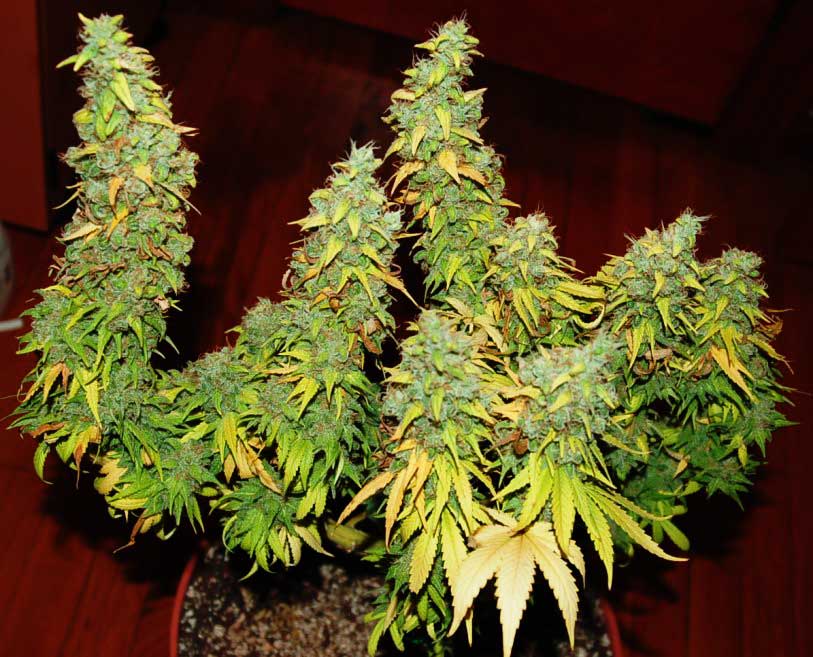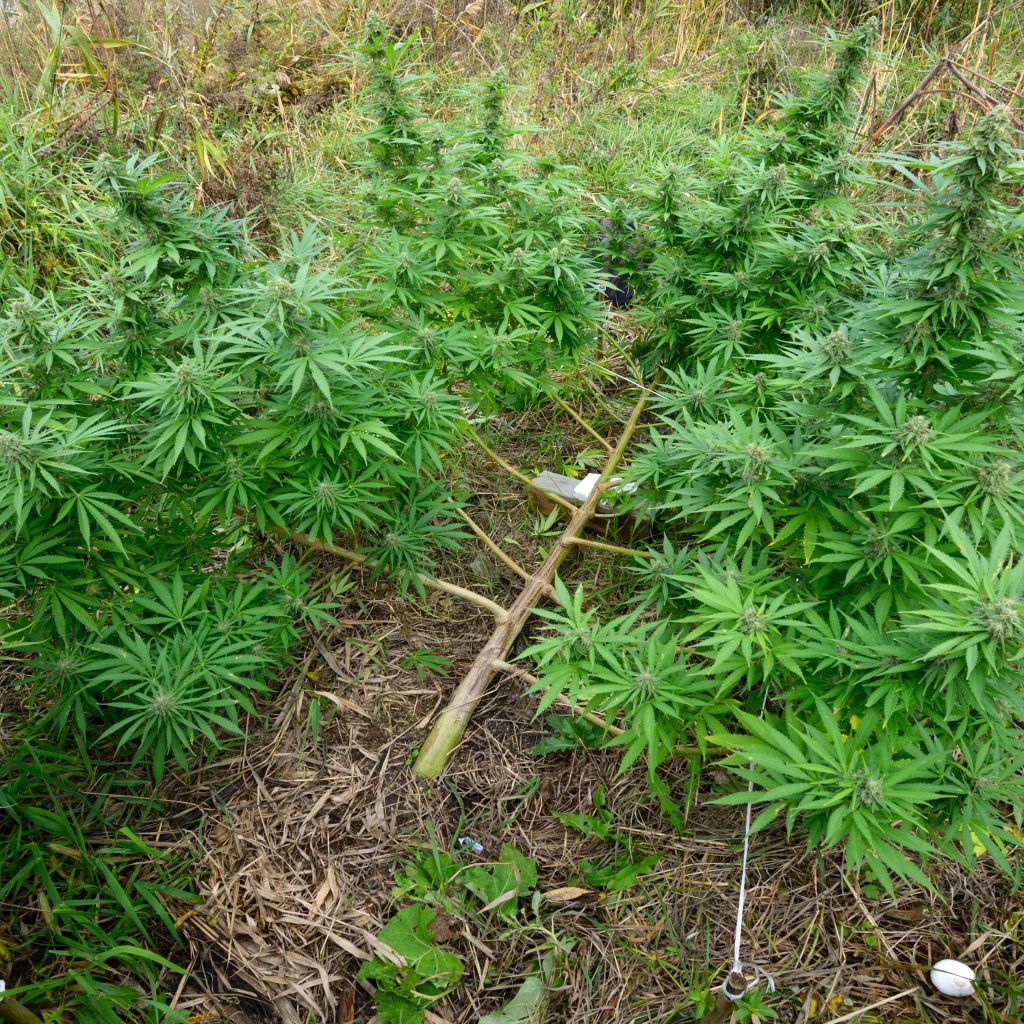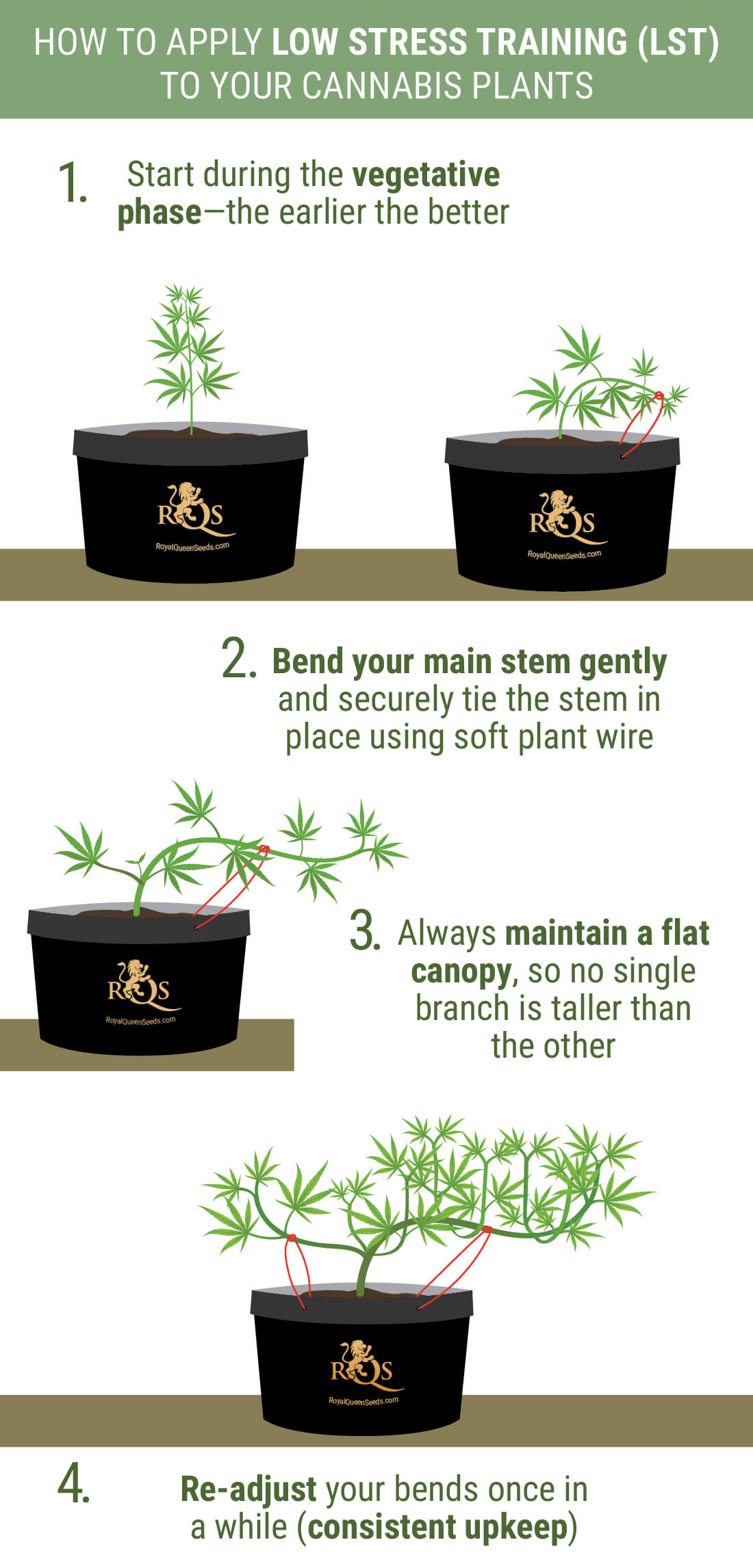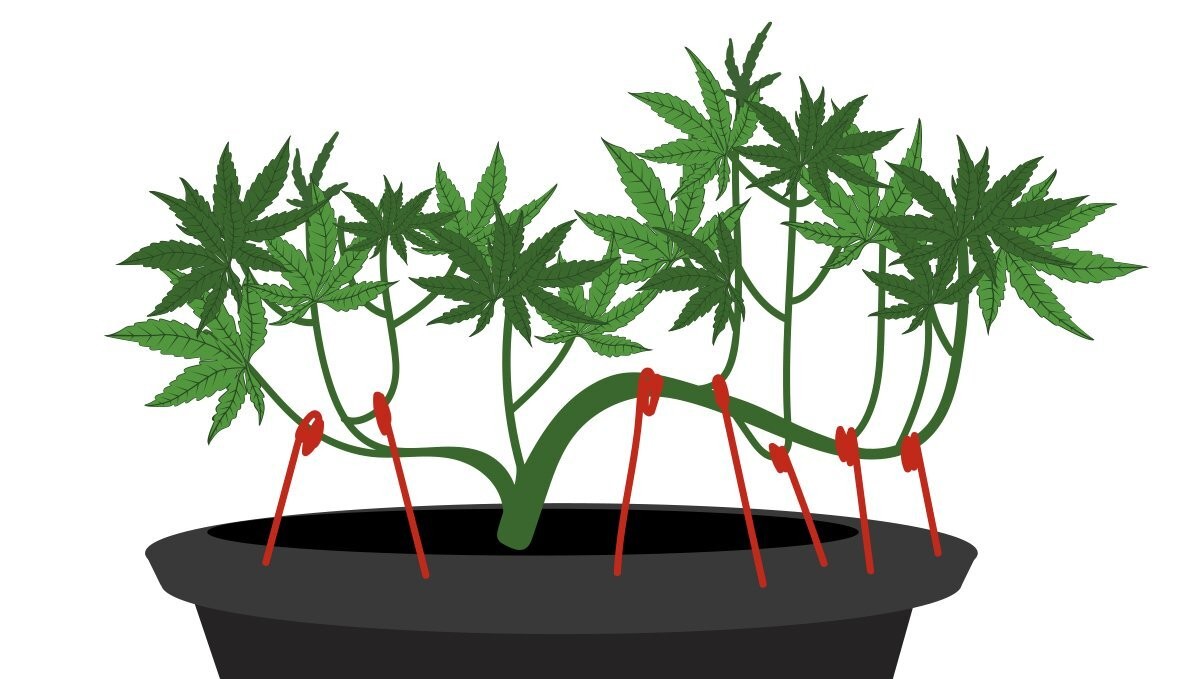As cannabis cultivators, we're always seeking ways to maximize our yields and get the most out of our grow spaces.
One highly effective technique that has gained widespread popularity in recent years is Low-Stress Training (LST). This gentle plant manipulation method not only helps increase bud production but also ensures efficient use of vertical and horizontal growing areas. So, let's dive into the art of LST and discover how you can take your cannabis yields to new heights.

IMAGE: Grow Weed Easy
What is Low-Stress Training (LST)?
Low-Stress Training, or LST, is a cultivation technique that involves gently bending and manipulating the plant's branches to promote even light distribution, better airflow, and optimal bud development. Unlike high-stress training methods like topping or fimming, which involve cutting or removing parts of the plant, LST is a non-destructive approach that aims to maximize the plant's natural growth potential.
The primary goal of LST is to expose as much of the plant's surface area to direct light as possible. By carefully bending and securing the branches, you create an even canopy that allows light to penetrate deeper into the plant, promoting the development of more bud sites and increasing overall yields.
Benefits of Low-Stress Training
- Increased Yields and Bud Size: By exposing more of the plant's surface area to light, LST encourages the formation of more bud sites, ultimately leading to larger, denser buds and higher overall yields.
- Better Light Exposure and Air Circulation: An even canopy created through LST ensures that light and air can reach all parts of the plant, preventing the formation of dense, shaded areas where mold and pests can thrive.
- More Efficient Use of Grow Space: LST allows you to control the plant's shape and size, making it easier to maximize the available grow space and potentially fit more plants in the same area.
- Improved Bud Development and Quality: By exposing more bud sites to direct light, LST promotes better trichome production and overall bud quality.
IMAGE: Bud Trainer
When to Start LST
The best time to begin LST is during the vegetative growth phase, typically when your plants are around 20-30 centimeters tall. At this stage, the plants are still flexible and responsive to training, making it easier to gently manipulate the branches without causing excessive stress or damage.
It's important to monitor your plants closely and only start LST when they are healthy and vigorous. Avoid attempting LST on plants that are already showing signs of stress, such as discolored or drooping leaves, as this could further compromise their health.

IMAGE: Bud Trainer
Essential Tools and Materials
To successfully implement LST, you'll need a few essential tools and materials:
- Soft Plant Ties or Garden Wire: These flexible materials are used to gently secure the bent branches in their new positions without damaging the plant.
- Binder Clips or Weights: Binder clips or small weights can be attached to the ends of branches to help train them downwards or sideways.
- Stakes or Support Frame: A sturdy support frame or stakes can help hold the bent branches in place and prevent them from springing back.
- Scissors or Pruning Shears: For trimming any excess growth or removing any unwanted branches during the LST process.
When choosing your materials, opt for soft, pliable ties or wires that won't cut into the plant's stems. Always handle your plants gently and avoid excessive bending or twisting of the branches.
Step-by-Step Guide to LST
- Identify the Main Stem and Top Branches: Begin by locating the main stem and identifying the top branches that will be the focus of your LST efforts.
- Gently Bend the Branches: Using soft plant ties or garden wire, carefully bend the top branches outwards and downwards, creating a spiral or circular pattern around the main stem. Avoid bending the branches more than 90 degrees or kinking them sharply, as this can damage the plant.
- Secure the Branches: Once the branches are in their new positions, use additional plant ties or binder clips to secure them in place. Ensure that the ties are not too tight, as this can restrict the plant's growth and cause stress.
- Repeat and Adjust: As new growth appears, continue to gently bend and secure the new branches, maintaining the desired shape and canopy. Regularly adjust the ties or support frame as needed to accommodate the plant's growth.
- Monitor for Stress: Throughout the LST process, closely monitor your plants for any signs of stress, such as discolored or drooping leaves, stunted growth, or wilting. If you notice any concerning symptoms, loosen the ties or adjust the plant's position to alleviate the stress.
It's important to note that LST is a gradual process that requires patience and regular attention. Avoid bending or manipulating the plant too aggressively, as this can cause unnecessary stress and potentially damage the plant.
IMAGE: LinkedIn
Advanced LST Techniques
As you become more experienced with LST, you may want to explore more advanced techniques to further maximize your yields. Two popular methods are mainlining and manifolding:
Mainlining: This technique involves carefully pruning and training the plant to create multiple main stems, each with its own set of branches. Mainlining can significantly increase the number of bud sites and overall yields, but it requires a higher level of skill and attention.
Manifolding: Similar to mainlining, manifolding involves creating multiple main stems or "manifolds" by strategically pruning and training the plant. The goal is to create an even, symmetrical canopy with multiple flowering sites, maximizing light exposure and bud production.
Both mainlining and manifolding are advanced techniques that require a deep understanding of plant anatomy and growth patterns. It's recommended to have experience with basic LST before attempting these more complex methods.

IMAGE: Sensei Seeds
Combining LST with Other Training Methods
LST can be effectively combined with other training methods, such as topping or fimming, to further enhance your yields and bud quality. Here's how you can integrate these techniques:
Topping: Topping involves removing the main growing tip of the plant, encouraging the growth of multiple new branches. When combined with LST, topping can help create a more even canopy and increase the number of bud sites.
Fimming: Similar to topping, fimming (a variation of topping) involves removing a portion of the main growing tip, rather than the entire tip. This technique can be used in conjunction with LST to promote lateral growth and bushier plants.
Lollipopping: Lollipopping involves removing the lower branches and growth sites to focus the plant's energy on the main bud sites. When combined with LST, lollipopping can help create a more concentrated and manageable canopy, improving light penetration and airflow.
It's essential to carefully plan and execute these combined training techniques, as they can put additional stress on your plants if not done correctly. Always monitor your plants closely and adjust your approach as needed to ensure their health and vitality.

IMAGE: Royal Queen Seeds
Monitoring and Adjusting LST
Throughout the LST process, it's crucial to regularly monitor and adjust your setup as your plants grow and develop. Here are some key tips to keep in mind:
- Check Ties and Support Structures: Routinely inspect the plant ties or support structures to ensure they are not causing any unnecessary stress or restricting growth. Loosen or adjust them as needed.
- Watch for Signs of Stress: Be vigilant for any signs of stress, such as discolored or drooping leaves, stunted growth, or wilting. If you notice any concerning symptoms, adjust your LST setup or provide additional support to alleviate the stress.
- Prune and Maintain: Regularly prune any excess growth or remove any unwanted branches to maintain the desired plant shape and canopy structure.
- Adjust for Plant Growth: As your plants grow, you may need to adjust the positioning of the branches or add additional support structures to accommodate their size and shape.
Remember, LST is an ongoing process that requires patience, attention to detail, and a willingness to adapt your approach based on your plants' unique needs and responses.

IMAGE: Royal Queen Seeds
Summary and Key Takeaways
Mastering the art of Low-Stress Training (LST) can be a game-changer for cannabis cultivators seeking to maximize their yields and bud quality. By gently manipulating the plant's branches and creating an even canopy, LST promotes better light exposure, airflow, and bud development, ultimately leading to larger, denser buds and higher overall yields.
Here are the key takeaways:
- LST is a non-destructive plant training technique that involves gently bending and securing the branches to promote even light distribution and better airflow.
- Benefits of LST include increased yields, improved bud quality, efficient use of grow space, and better light exposure and air circulation.
- Start LST during the vegetative growth phase when plants are around 20-30 centimeters tall and healthy.
- Use soft plant ties, binder clips, and support structures to gently manipulate and secure the branches in their desired positions.
- Monitor your plants closely for signs of stress and adjust your LST setup as needed.
- Explore advanced techniques like mainlining and manifolding, and combine LST with other training methods like topping, fimming, or lollipopping for even better results.
Remember, patience, attention to detail, and a willingness to experiment and adapt are key to mastering the art of LST. With practice and dedication, you can unlock the full potential of your cannabis plants and achieve truly impressive yields.
FAQs
- Can LST be used on autoflowering strains? Yes, LST can be effectively used on autoflowering strains, but it's important to start the training process early in the plant's life cycle, as autoflowers have a shorter overall growth period.
- How often should I adjust the LST setup? It's recommended to check and adjust your LST setup at least once a week, or more frequently as needed, to accommodate the plant's growth and ensure that the ties or support structures are not causing unnecessary stress.
- Is it possible to over-stress a plant with LST? While LST is considered a low-stress training technique, it is still possible to over-stress your plants if you are too aggressive with bending or manipulating the branches. Always handle your plants gently and monitor for signs of stress.
- Can LST be combined with other training methods like topping or fimming? Yes, LST can be effectively combined with other training methods like topping, fimming, or lollipopping to further enhance yields and bud quality. However, it's important to carefully plan and execute these combined techniques to avoid excessive stress on your plants.
- At what point should I stop LST and allow the plant to flower? It's generally recommended to stop LST and allow your plants to transition to the flowering stage once they have reached their desired size and canopy structure. Most growers stop training a few weeks before initiating the flowering cycle to allow the plants to recover and focus their energy on bud production.
By following these guidelines and techniques, you'll be well on your way to mastering the art of Low-Stress Training and unlocking the full potential of your cannabis plants. Happy growing!

